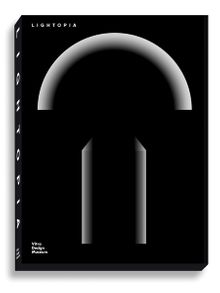| ||||||||||||||||||||||||||||||||||||||||||||||
CURATOR INDEX
|
|
in stock $120.00 Free Shipping UPS GROUND IN THE CONTINENTAL U.S. |
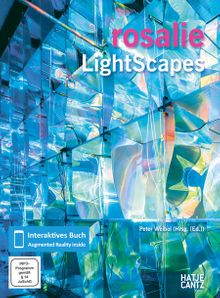 Rosalie: Light Scapes
Rosalie: Light Scapes
Published by Hatje Cantz.
Edited by Peter Weibel. Text by Andreas Platthaus, Peter Weibel.
PUBLISHER
Hatje Cantz
BOOK FORMAT
Clth, 9.25 x 12.75 in. / 240 pgs / 207 color.
PUBLISHING STATUS
Pub Date 4/30/2014
Out of stock indefinitely
DISTRIBUTION
D.A.P. Exclusive
Catalog: SPRING 2014 p. 179
PRODUCT DETAILS
ISBN 9783775737463 FLAT40
List Price: $75.00 CAD $99.00
AVAILABILITY
Not available
STATUS: Out of stock indefinitely. |
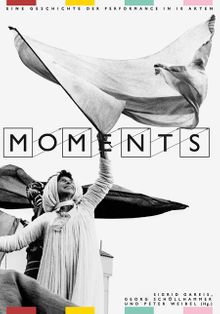 Moments
Moments
Published by Walther König, Köln.
Edited by Sigrid Gareis, Georg Schöllhammer, Peter Weibel. Text by Sven-Olov Wallenstein, Keti Chukhrov, Gerald Siegmund, Adrian Heathfield, Timmy De Last, Ana Longoni, Martina Ruhsam, Steven ten Thije, Nicole Haltzinger, Petra Sabisch.
PUBLISHER
Walther König, Köln
BOOK FORMAT
Paperback, 6.75 x 9.5 in. / 500 pgs / 320 color.
PUBLISHING STATUS
Pub Date 10/31/2013
Active
DISTRIBUTION
D.A.P. Exclusive
Catalog: SPRING 2014 p. 193
PRODUCT DETAILS
ISBN 9783863352899 FLAT40
List Price: $70.00 CAD $92.50
AVAILABILITY
In stock
in stock $70.00 Free Shipping UPS GROUND IN THE CONTINENTAL U.S. |
 Otto Piene
Otto Piene
Energy Fields in Celebration of Otto Piene's 85th Birthday
Published by Moderne Kunst Nürnberg.
Text by Otto Piene, Philipp Ziegler. Preface by Peter Weibel, Andreas Beitin. Interview by Edgar Quadt.
PUBLISHER
Moderne Kunst Nürnberg
BOOK FORMAT
Paperback, 6.75 x 9.5 in. / 132 pgs / 65 color / 1 bw.
PUBLISHING STATUS
Pub Date 9/30/2013
Out of print
DISTRIBUTION
D.A.P. Exclusive
Catalog: FALL 2013 p. 181
PRODUCT DETAILS
ISBN 9783869844206 FLAT40
List Price: $30.00 CAD $40.00
AVAILABILITY
Not available
STATUS: Out of print | 00/00/00 For assistance locating a copy, please see our list of recommended out of print specialists |
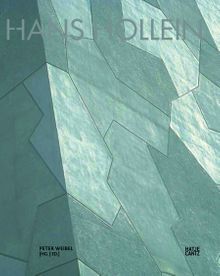 Hans Hollein
Hans Hollein
Published by Hatje Cantz.
Edited Peter Weibel. Text by Hans Hollein, Peter Weibel.
PUBLISHER
Hatje Cantz
BOOK FORMAT
Hardcover, 11.5 x 14.5 in. / 420 pgs / 521 color / 217 bw.
PUBLISHING STATUS
Pub Date 4/30/2012
Out of print
DISTRIBUTION
D.A.P. Exclusive
Catalog: SPRING 2012 p. 118
PRODUCT DETAILS
ISBN 9783775732574 TRADE
List Price: $120.00 CAD $160.00
AVAILABILITY
Not available
STATUS: Out of print | 00/00/00 For assistance locating a copy, please see our list of recommended out of print specialists |
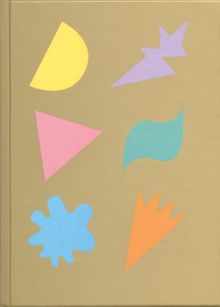 Alessandro Mendini
Alessandro Mendini
Published by Moderne Kunst Nürnberg.
Text by Peter Weiss, Alessandro Mendini. Preface by Angelika Nollert.
PUBLISHER
Moderne Kunst Nürnberg
BOOK FORMAT
Hardcover, 5.5 x 7.5 in. / 204 pgs / 128 color.
PUBLISHING STATUS
Pub Date 4/30/2012
Out of print
DISTRIBUTION
D.A.P. Exclusive
Catalog: SPRING 2012 p. 125
PRODUCT DETAILS
ISBN 9783869842554 TRADE
List Price: $40.00 CAD $54.00
AVAILABILITY
Not available
STATUS: Out of print | 00/00/00 For assistance locating a copy, please see our list of recommended out of print specialists |
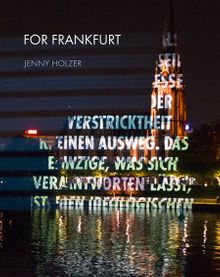 Jenny Holzer: For Frankfurt
Jenny Holzer: For Frankfurt
Published by Kerber.
Edited by Friederike von Bünau. Text by Henri Cole, Rose-Maria Gropp, Peter Weibel.
PUBLISHER
Kerber
BOOK FORMAT
Hardcover, 8.5 x 10.5 in. / 128 pgs / 41 color.
PUBLISHING STATUS
Pub Date 4/30/2012
Out of print
DISTRIBUTION
D.A.P. Exclusive
Catalog: SPRING 2012 p. 95
PRODUCT DETAILS
ISBN 9783866785526 TRADE
List Price: $45.00 CAD $55.00
AVAILABILITY
Not available
STATUS: Out of print | 00/00/00 For assistance locating a copy, please see our list of recommended out of print specialists |
 Global Studies
Global Studies
Mapping Contemporary Art and Culture
Published by Hatje Cantz.
Edited by Hans Belting, Jacob Birken, Peter Weibel, Andrea Buddensieg. Text by Thomas Fillitz, Rania Gaafar, Anthony Gardner, Birgit Hopfener, Nicola Müllerschön, Adele Tan et al.
PUBLISHER
Hatje Cantz
BOOK FORMAT
Paperback, 6.75 x 9.5 in. / 456 pgs / 22 color / 74 bw.
PUBLISHING STATUS
Pub Date 1/31/2012
Out of stock indefinitely
DISTRIBUTION
D.A.P. Exclusive
Catalog: SPRING 2012 p. 116
PRODUCT DETAILS
ISBN 9783775732024 TRADE
List Price: $60.00 CAD $79.00
AVAILABILITY
Not available
STATUS: Out of stock indefinitely. |
 Robert Wilson: Video Portraits
Robert Wilson: Video Portraits
Published by Walther König, Köln.
Edited by Peter Weibel. Text by Norman Bryson, Ali Hossaini, Noah Khoshbin, Matthew Shattuck, Nicola Suthor, Peter Weibel, Robert Wilson.
PUBLISHER
Walther König, Köln
BOOK FORMAT
Hardcover, 8.25 x 10.25 in. / 223 pgs / illustrated throughout.
PUBLISHING STATUS
Pub Date 9/30/2011
Out of print
DISTRIBUTION
D.A.P. Exclusive
Catalog: SPRING 2011 p. 139
PRODUCT DETAILS
ISBN 9783865608505 FLAT40
List Price: $45.00 CAD $60.00
AVAILABILITY
Not available
STATUS: Out of print | 00/00/00 For assistance locating a copy, please see our list of recommended out of print specialists |
 Record Again!
Record Again!
40yearsvideoart.de Part 2
Published by Hatje Cantz.
Edited by Christoph Blase, Peter Weibel. Text by René Block, Walter Grasskamp, Wulf Herzogenrath.
PUBLISHER
Hatje Cantz
BOOK FORMAT
Hardcover, 7.5 x 10 in. / 536 pgs / 344 color / 296 bw.
PUBLISHING STATUS
Pub Date 6/30/2011
Out of print
DISTRIBUTION
D.A.P. Exclusive
Catalog: SPRING 2010 p. 81
PRODUCT DETAILS
ISBN 9783775725224 TRADE
List Price: $55.00 CAD $65.00
AVAILABILITY
Not available
STATUS: Out of print | 00/00/00 For assistance locating a copy, please see our list of recommended out of print specialists |
 Elmgreen & Dragset: Trilogy
Elmgreen & Dragset: Trilogy
Published by Walther König, Köln.
Edited by Andreas F. Beitin, Peter Weibel. Text by Tony Benn, Hubert Burda, Tom Mole, Mehdi Belhaj Kacem, Nicolaus Schafhausen, Wolfgang Ullrich, et al. Interview by Hans Ulrich Obrist with Elmgreen & Dragset. Interview by Sacha Goldmann with Paul Virilio.
PUBLISHER
Walther König, Köln
BOOK FORMAT
Clth, 8 x 10 in. / 384 pgs / 100 color.
PUBLISHING STATUS
Pub Date 12/31/2011
Active
DISTRIBUTION
D.A.P. Exclusive
Catalog: SPRING 2011 p. 81
PRODUCT DETAILS
ISBN 9783865609083 TRADE
List Price: $59.95 CAD $79.00
AVAILABILITY
In stock
in stock $59.95 Free Shipping UPS GROUND IN THE CONTINENTAL U.S. |
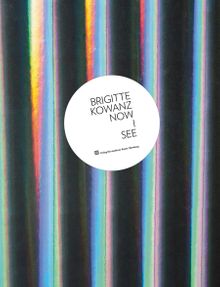 Brigitte Kowanz: Now I See
Brigitte Kowanz: Now I See
Published by Moderne Kunst Nürnberg.
Text by Edelbert Köb, Rainer Fuchs, Anton Zeilinger, Peter Weibel.
PUBLISHER
Moderne Kunst Nürnberg
BOOK FORMAT
Hardcover, 9.25 x 12 in. / 294 pgs / 400 color.
PUBLISHING STATUS
Pub Date 4/30/2011
Out of print
DISTRIBUTION
D.A.P. Exclusive
Catalog: SPRING 2011 p. 130
PRODUCT DETAILS
ISBN 9783869841410 TRADE
List Price: $60.00 CAD $79.00
AVAILABILITY
Not available
STATUS: Out of print | 00/00/00 For assistance locating a copy, please see our list of recommended out of print specialists |
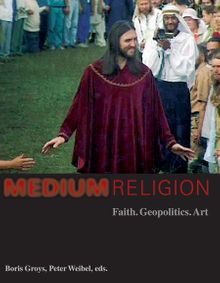 Medium Religion
Medium Religion
Faith, Geopolitics, Art
Published by Walther König, Köln.
Text by Boris Groys, Peter Weibel.
PUBLISHER
Walther König, Köln
BOOK FORMAT
Paperback, 8.5 x 10 in. / 230 pgs / 250 color / 30 bw.
PUBLISHING STATUS
Pub Date 6/30/2011
Active
DISTRIBUTION
D.A.P. Exclusive
Catalog: FALL 2009 p. 90
PRODUCT DETAILS
ISBN 9783865606044 TRADE
List Price: $46.00 CAD $62.50
AVAILABILITY
In stock
in stock $46.00 Free Shipping UPS GROUND IN THE CONTINENTAL U.S. |
 Richard Siegal: If/Then Dialogues
Richard Siegal: If/Then Dialogues
Published by Hatje Cantz.
Text by Peter Weibel.
PUBLISHER
Hatje Cantz
BOOK FORMAT
DVD (NTSC & PAL), 5.5 x 7.5 in. / 24 pgs / color.
PUBLISHING STATUS
Pub Date 11/30/2010
Out of print
DISTRIBUTION
D.A.P. Exclusive
Catalog: FALL 2010 p. 101
PRODUCT DETAILS
ISBN 9783775726412 TRADE
List Price: $45.00 CAD $55.00
AVAILABILITY
Not available
STATUS: Out of print | 00/00/00 For assistance locating a copy, please see our list of recommended out of print specialists |
 Jürgen Klauke: Aesthetic Paranoia
Jürgen Klauke: Aesthetic Paranoia
Published by Hatje Cantz.
Edited by Peter Weibel. Text by Régis Durand, Ursula Frohne, Andreas Beitin.
PUBLISHER
Hatje Cantz
BOOK FORMAT
Hardcover, 11.25 x 11.5 in. / 252 pgs / 18 color / 122 bw.
PUBLISHING STATUS
Pub Date 11/30/2010
Out of print
DISTRIBUTION
D.A.P. Exclusive
Catalog: FALL 2010 p. 162
PRODUCT DETAILS
ISBN 9783775725941 TRADE
List Price: $60.00 CAD $70.00
AVAILABILITY
Not available
STATUS: Out of print | 00/00/00 For assistance locating a copy, please see our list of recommended out of print specialists |
 Fast Forward 2: The Power of Motion Media Art
Fast Forward 2: The Power of Motion Media Art
Sammlung Goetz
Published by Hatje Cantz.
Edited by Stephan Urbaschek, Ingvild Goetz. Texts by Andreas Beitin, Gregor Jansen, Stephan Urbaschek, Peter Weibel, Andreas Weisser.
PUBLISHER
Hatje Cantz
BOOK FORMAT
Hardcover, 9.75 x 11.25 in. / 320 pgs / 782 color.
PUBLISHING STATUS
Pub Date 11/30/2010
Out of print
DISTRIBUTION
D.A.P. Exclusive
Catalog: FALL 2010 p. 108
PRODUCT DETAILS
ISBN 9783775726047 FLAT40
List Price: $75.00 CAD $90.00
AVAILABILITY
Not available
STATUS: Out of print | 00/00/00 For assistance locating a copy, please see our list of recommended out of print specialists |
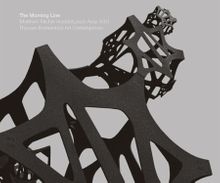 Matthew Ritchie: The Morning Line
Matthew Ritchie: The Morning Line
Published by Walther König, Köln.
Edited by Eva Ebersberger, Daniela Zyman. Text by Caroline A. Jones, Peter Weibel, Benjamin Aranda, Chris Lasch, Mark Wasiuta, Bryce Dessner, Florian Hecker, Tony Myatt.
PUBLISHER
Walther König, Köln
BOOK FORMAT
Paperback, 9.75 x 8 in. / 152 pgs / illustrated throughout.
PUBLISHING STATUS
Pub Date 2/1/2009
Out of print
DISTRIBUTION
D.A.P. Exclusive
Catalog: SPRING 2009 p. 180
PRODUCT DETAILS
ISBN 9783865605665 TRADE
List Price: $45.00 CAD $60.00
AVAILABILITY
Not available
STATUS: Out of print | 00/00/00 For assistance locating a copy, please see our list of recommended out of print specialists |
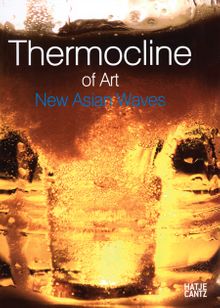 Thermocline of Art
Thermocline of Art
New Asian Waves
Published by Hatje Cantz.
Edited by Gregor Jansen, Wonil Rhee, Peter Weibel. Text by Nancy Adajania, Eugene Tan.
PUBLISHER
Hatje Cantz
BOOK FORMAT
Hardback, 9 x 11.5 in. / 352 pgs / illustrated throughout.
PUBLISHING STATUS
Pub Date 12/15/2007
Out of print
DISTRIBUTION
D.A.P. Exclusive
Catalog: SPRING 2008 p. 85
PRODUCT DETAILS
ISBN 9783775720731 TRADE
List Price: $60.00 CAD $70.00
AVAILABILITY
Not available
STATUS: Out of print | 11/28/2010 For assistance locating a copy, please see our list of recommended out of print specialists |
 Contemporary Art and the Museum: A Global Perspective
Contemporary Art and the Museum: A Global Perspective
Published by Hatje Cantz.
Edited by Andrea Buddensieg, Peter Weibel. Text by Claude Ardouin, Hans Belting.
PUBLISHER
Hatje Cantz
BOOK FORMAT
Paperback, 6 x 9 in. / 256 pgs / 45 color.
PUBLISHING STATUS
Pub Date 7/1/2007
Out of print
DISTRIBUTION
D.A.P. Exclusive
Catalog: FALL 2007 p. 85
PRODUCT DETAILS
ISBN 9783775719339 TRADE
List Price: $40.00 CAD $54.00
AVAILABILITY
Not available
STATUS: Out of print | 00/00/00 For assistance locating a copy, please see our list of recommended out of print specialists |
 Between Two Deaths
Between Two Deaths
Published by Hatje Cantz.
Edited by Ellen Blumenstein, Felix Ensslin. Text by Suzanne Barnard, Mika Hannula.
PUBLISHER
Hatje Cantz
BOOK FORMAT
Clothbound, 8.5 x 10.5 in. / 328 pgs / 378 color.
PUBLISHING STATUS
Pub Date 7/1/2007
Out of print
DISTRIBUTION
D.A.P. Exclusive
Catalog: FALL 2007 p. 136
PRODUCT DETAILS
ISBN 9783775720038 SDNR30
List Price: $40.00 CAD $50.00
AVAILABILITY
Not available
STATUS: Out of print | 5/18/2011 For assistance locating a copy, please see our list of recommended out of print specialists |
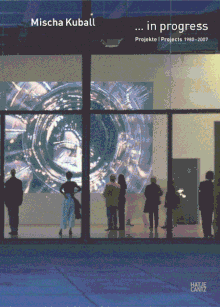 Mischa Kuball: In Progress Projects
Mischa Kuball: In Progress Projects
1980-2007
Published by Hatje Cantz.
Edited by Florian Matzner. Text by Boris Groys, Peter Weibel, Armin Zweite, Peter Sloterdijk, et. al.
PUBLISHER
Hatje Cantz
BOOK FORMAT
Hardcover, 8.5 x 11.75 in. / 408 pgs / 136 color / 117 bw.
PUBLISHING STATUS
Pub Date 6/1/2007
Out of print
DISTRIBUTION
D.A.P. Exclusive
Catalog: FALL 2007 p. 131
PRODUCT DETAILS
ISBN 9783775719261 TRADE
List Price: $65.00 CAD $75.00
AVAILABILITY
Not available
STATUS: Out of print | 11/28/2010 For assistance locating a copy, please see our list of recommended out of print specialists |
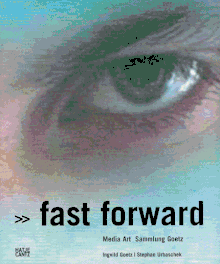 Fast Forward: Media Art
Fast Forward: Media Art
Published by Hatje Cantz.
Edited by Stephan Urbaschek. Text by Fernanda Arruda, Andrea Buddensieg, Michael Clifton, Anne Erfle, Barbara Filser, Peggy Gale, Ulrike Havemann, Sabine Himmelsbach, Michael Hirsch, Anke Hoffmann, Petra Kaiser, Katrin Kaschadt, Jorg Leupold, Petra Meyer, Mark Nash, Margit Rosen, et al.
PUBLISHER
Hatje Cantz
BOOK FORMAT
Hardcover, 9.75 x 11.5 in. / 532 pgs / 1932 color.
PUBLISHING STATUS
Pub Date 12/1/2006
Out of print
DISTRIBUTION
D.A.P. Exclusive
Catalog: SPRING 2007 p. 133
PRODUCT DETAILS
ISBN 9783775718653 TRADE
List Price: $60.00 CAD $70.00
AVAILABILITY
Not available
STATUS: Out of print | 00/00/00 For assistance locating a copy, please see our list of recommended out of print specialists |
 Gego: 1957-1988
Gego: 1957-1988
Thinking the Line
Published by Hatje Cantz.
Edited by Nadja Peter Weibel. Essays by Bruno Bosteels, Kaira Marie Caba“as, Hannah Feldman, Julieta Gonzlez and Juan Carlos Ledezma. Texts by Lourdes Blanco, Maria Luz Crdenas, Hanni Ossott, Maria Fernanda Palacios, Luis P»rez Oramas and Marta Traba.
PUBLISHER
Hatje Cantz
BOOK FORMAT
Paperback, 8.5 x 11 in. / 240 pgs / 62 color and 111 bw.
PUBLISHING STATUS
Pub Date 8/15/2006
Out of print
DISTRIBUTION
D.A.P. Exclusive
Catalog: FALL 2006 p. 115
PRODUCT DETAILS
ISBN 9783775717878 TRADE
List Price: $55.00 CAD $65.00
AVAILABILITY
Not available
STATUS: Out of print | 11/28/2010 For assistance locating a copy, please see our list of recommended out of print specialists |
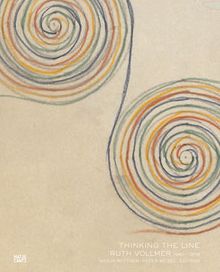 Ruth Vollmer: 1961-1978
Ruth Vollmer: 1961-1978
Thinking the Line
Published by Hatje Cantz.
Edited by Nadja Rottner and Peter Weibel. Essays by Rhea Anastas, Mel Bochner, Ann Reynolds, Nadja Rottner, Kirsten Swenson and Anna Vallye. Text by Rolf-Gunter Dienst, Susan Carol Larsen, Lucy Lippard, Sol LeWitt, Thomas Nozkowski, and Richard Tuttle.
PUBLISHER
Hatje Cantz
BOOK FORMAT
Paperback, 8.5 x 11 in. / 224 pgs / 46 color and 97 bw.
PUBLISHING STATUS
Pub Date 8/15/2006
Out of print
DISTRIBUTION
D.A.P. Exclusive
Catalog: FALL 2006 p. 114
PRODUCT DETAILS
ISBN 9783775717861 TRADE
List Price: $55.00 CAD $65.00
AVAILABILITY
Not available
STATUS: Out of print | 11/28/2010 For assistance locating a copy, please see our list of recommended out of print specialists |
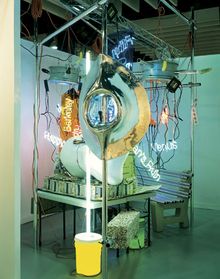 Light Art. Artificial Light
Light Art. Artificial Light
Light as A Medium in the Art of the 20th and 21st Centuries
Published by Hatje Cantz.
Edited by Peter Weibel and Gregor Jansen Essays by Andreas Beitin, Dietmar Elger, Friedrich Kittler, Gnter Leising, Frank Popper, Wolfgang Schivelbusch, Sara Selwood, Peter Sloterdijk, Stephan von Wiese, Yvonne Ziegler and Daniela Zyman,
PUBLISHER
Hatje Cantz
BOOK FORMAT
Paperback, 8.5 x 11 in. / 700 pgs / 980 illustrations
PUBLISHING STATUS
Pub Date 8/15/2006
Out of print
DISTRIBUTION
D.A.P. Exclusive
Catalog: FALL 2006 p. 62
PRODUCT DETAILS
ISBN 9783775717748 TRADE
List Price: $105.00 CAD $125.00
AVAILABILITY
Not available
STATUS: Out of print | 00/00/00 For assistance locating a copy, please see our list of recommended out of print specialists |
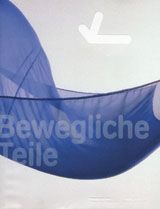 Moving Parts: Forms Of The Kinetic
Moving Parts: Forms Of The Kinetic
Published by Walther König, Köln.
Essays by Guy Brett, Rolf Pfeifer, Britta Glatzeder, Peter Weibel and Christian Theo Steiner Foreword by Guido Magnaguagno. Introduction by Peter Pakesch.
PUBLISHER
Walther König, Köln
BOOK FORMAT
Paperback, 8.75 x 11.25 in. / 288 pgs / 105 color / 136 bw.
PUBLISHING STATUS
Pub Date 6/15/2005
Out of print
DISTRIBUTION
D.A.P. Exclusive
Catalog: FALL 2005 p. 172
PRODUCT DETAILS
ISBN 9783883758510 SDNR30
List Price: $45.00 CAD $55.00
AVAILABILITY
Not available
STATUS: Out of print | 00/00/00 For assistance locating a copy, please see our list of recommended out of print specialists |
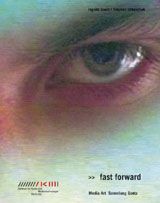 Fast Forward
Fast Forward
Media Art: Sammlung Goetz
Published by Sammlung Goetz.
Essays by Sabine Himmelsbach, Mark Nash, Stephan Urbaschek, Peter Weibel, et al.
PUBLISHER
Sammlung Goetz
BOOK FORMAT
Paperback, 3 x 4.75 in. / 0 pgs / illustrated throughout.
PUBLISHING STATUS
Pub Date 2/2/2004
No longer our product
DISTRIBUTION
D.A.P. Exclusive
Catalog: SPRING 2004
PRODUCT DETAILS
ISBN 9783980806398 TRADE
List Price: $75.00 CAD $90.00
AVAILABILITY
Not available
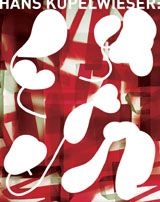 Hans Kupelwieser: Sculptures And Photograms
Hans Kupelwieser: Sculptures And Photograms
Published by Hatje Cantz.
Essays by Christa Steinle, Peter Weibel, Rainer Metzger, Kerstin Braun, Rolf Sachsse, and Manfred Wolff-Plottegg.
PUBLISHER
Hatje Cantz
BOOK FORMAT
Paperback, 9.5 x 11.75 in. / 256 pgs / 200 color.
PUBLISHING STATUS
Pub Date 8/2/2004
Out of print
DISTRIBUTION
D.A.P. Exclusive
Catalog: FALL 2004
PRODUCT DETAILS
ISBN 9783775714624 TRADE
List Price: $40.00 CAD $50.00
AVAILABILITY
Not available
STATUS: Out of print | 5/18/2011 For assistance locating a copy, please see our list of recommended out of print specialists |
 Architectural Laboratories
Architectural Laboratories
Greg Lynn & Hani Rashid
Published by nai010 publishers.
Essays by Max Hollein, Greg Lynn, Hani Rashid, Mark Taylor and Peter Weibel.
PUBLISHER
nai010 publishers
BOOK FORMAT
Paperback, 7.75 x 9.75 in. / 176 pgs / illustrated throughout.
PUBLISHING STATUS
Pub Date 2/2/2003
Out of print
DISTRIBUTION
D.A.P. Exclusive
Catalog: SPRING 2002
PRODUCT DETAILS
ISBN 9789056622411 TRADE
List Price: $29.95 CAD $35.00
AVAILABILITY
Not available
STATUS: Out of print | 11/25/2008 For assistance locating a copy, please see our list of recommended out of print specialists |
 Jordan Crandall: Drive
Jordan Crandall: Drive
Published by Hatje Cantz.
Edited by Peter Weibel.
PUBLISHER
Hatje Cantz
BOOK FORMAT
Paperback, 5.5 x 9 in. / 256 pgs / 160 color / 14 bw.
PUBLISHING STATUS
Pub Date 5/2/2003
Out of print
DISTRIBUTION
D.A.P. Exclusive
Catalog: FALL 2002
PRODUCT DETAILS
ISBN 9783775711746 TRADE
List Price: $39.95 CAD $50.00
AVAILABILITY
Not available
STATUS: Out of print | 8/1/2007 For assistance locating a copy, please see our list of recommended out of print specialists |
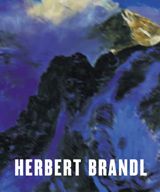 Herbert Brandl
Herbert Brandl
Published by Hatje Cantz.
Artwork by Herbert Brandl, Peter Weibel. Edited by Gunther Holler-Schuster, Hans Ulrich Obrist. Text by Denys Zacharopoulos, Ulrich Loock.
PUBLISHER
Hatje Cantz
BOOK FORMAT
Paperback, 10 x 11.75 in. / 416 pgs / 402 color.
PUBLISHING STATUS
Pub Date 3/2/2003
Out of print
DISTRIBUTION
D.A.P. Exclusive
Catalog: SPRING 2003
PRODUCT DETAILS
ISBN 9783775712378 TRADE
List Price: $45.00 CAD $55.00
AVAILABILITY
Not available
STATUS: Out of print | 12/11/2007 For assistance locating a copy, please see our list of recommended out of print specialists |
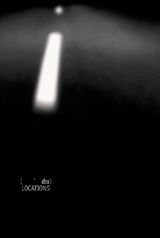 The Future Of Cinema: Immersive And Interactive
The Future Of Cinema: Immersive And Interactive
(dis)LOCATIONS
Published by Hatje Cantz.
Essays by Jill Bennett, James Donald, Ursula Frohne, Anna Munster, and Peter Weibel.
PUBLISHER
Hatje Cantz
BOOK FORMAT
Boxed / DVD with 104 pg booklet
PUBLISHING STATUS
Pub Date 6/2/2002
Out of print
DISTRIBUTION
D.A.P. Exclusive
Catalog: FALL 2001
PRODUCT DETAILS
ISBN 9783775710879 TRADE
List Price: $39.95 CAD $50.00
AVAILABILITY
Not available
STATUS: Out of print | 12/19/2005 For assistance locating a copy, please see our list of recommended out of print specialists |
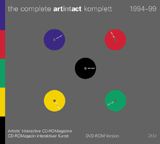 The Complete Artintact 1994-99
The Complete Artintact 1994-99
Artist's Interactive CD-ROMagazine on DVD-ROM
Published by Hatje Cantz.
Artwork by Luc Courchesne, Masaki Fujihata, Agnes Hegedus, Eric Lanz, George Legrady, Miroslaw Rogala, Bill Seaman, Aina Smid, Anja Wiese, Peter Weibel. Contributions by Erkki Huhtamo, Dieter Daniels, Tamas Waliczky, Jean-Louis Boissier, Ken Feingold, Marina Grzinic, Dieter Kiessling. Text by Timothy Druckrey, Anne-Marie Duguet, Jean Gagnon, Gerhard Lischka, Peter Lunenfeld, Timothy Murray, Peggy Phelan, Perry Hoberman.
PUBLISHER
Hatje Cantz
BOOK FORMAT
Paperback, 6.75 x 9.5 in. / 32 pgs / illustrated throughout.
PUBLISHING STATUS
Pub Date 10/2/2002
Out of print
DISTRIBUTION
D.A.P. Exclusive
Catalog: SPRING 2002
PRODUCT DETAILS
ISBN 9783775710923 TRADE
List Price: $60.00 CAD $70.00
AVAILABILITY
Not available
STATUS: Out of print | 8/1/2007 For assistance locating a copy, please see our list of recommended out of print specialists |
 Erwin Wurm: Fat Survival
Erwin Wurm: Fat Survival
Published by Hatje Cantz.
Edited by Peter Weibel. Essays by Peter Weiermair, Régis Durand and Christa Steinle, Maia Damianovic and Christine Marcel.
PUBLISHER
Hatje Cantz
BOOK FORMAT
Paperback, 9.5 x 11.5 in. / 280 pgs / 291 color / 72 bw
PUBLISHING STATUS
Pub Date 8/2/2002
Out of print
DISTRIBUTION
D.A.P. Exclusive
Catalog: FALL 2002
PRODUCT DETAILS
ISBN 9783775711814 TRADE
List Price: $35.00 CAD $40.00
AVAILABILITY
Not available
STATUS: Out of print | 4/24/2004 For assistance locating a copy, please see our list of recommended out of print specialists |
 Hypermental: Rampant Reality 1950-2000
Hypermental: Rampant Reality 1950-2000
From Salvador Dali to Jeff Koons
Published by Kunsthaus Zurich.
Contributions by Bice Curiger, Christoph Heinrich, Sibylle Berg, Norman Bryson, Paul D. Miller, Griselda Pollock, Thomas Tode, Gero von Randow, Peter Weibel.
PUBLISHER
Kunsthaus Zurich
BOOK FORMAT
Paperback, 10.5 x 13.5 in. / 194 pgs / illustrated throughout
PUBLISHING STATUS
Pub Date 1/2/2001
No longer our product
DISTRIBUTION
D.A.P. Exclusive
Catalog: SPRING 2001
PRODUCT DETAILS
ISBN 9783906574110 TRADE
List Price: $39.95 CAD $50.00
AVAILABILITY
PUBLISHER
Hatje Cantz
BOOK FORMAT
Paperback, 9.25 x 10.75 in. / 200 pgs / 100 color.
PUBLISHING STATUS
Pub Date 7/2/2000
Out of print
DISTRIBUTION
D.A.P. Exclusive
Catalog: SPRING 2000
PRODUCT DETAILS
ISBN 9783893229840 TRADE
List Price: $39.95 CAD $50.00
AVAILABILITY
Not available
STATUS: Out of print | 11/25/2008 For assistance locating a copy, please see our list of recommended out of print specialists |
Artintact 3
Published by Cantz.
Artwork by Peter Weibel. Contributions by Erkki Huhtamo, Ken Feingold, Lorne Falk. Text by Perry Hoberman.
PUBLISHER
Cantz
BOOK FORMAT
6.25 x 8.25 in. / 112 pgs / 24 bw
PUBLISHING STATUS
Pub Date 1/2/1997
Out of print
DISTRIBUTION
D.A.P. Exclusive
Catalog: SPRING 1997
PRODUCT DETAILS
ISBN 9783893228614 TRADE
List Price: $49.95 CAD $60.00
AVAILABILITY
Not available
STATUS: Out of print | 4/23/2001 For assistance locating a copy, please see our list of recommended out of print specialists |
